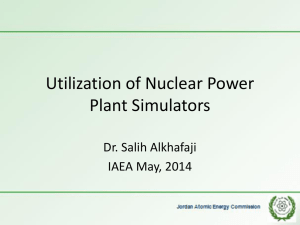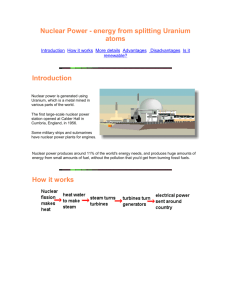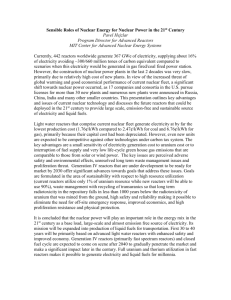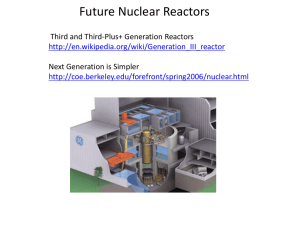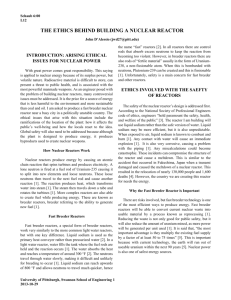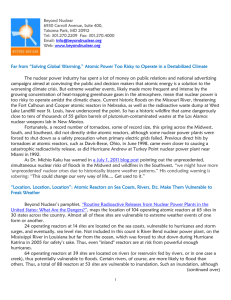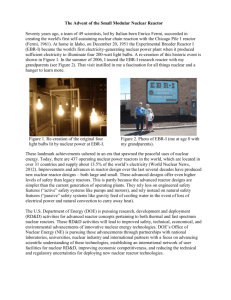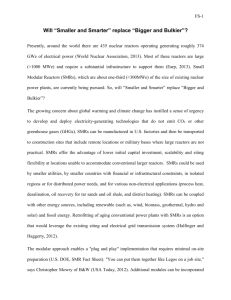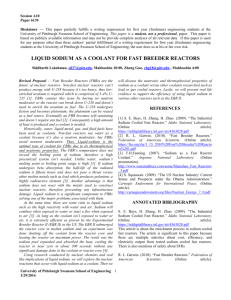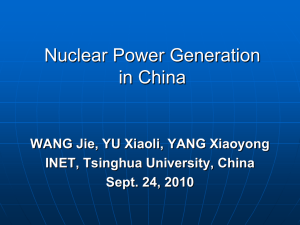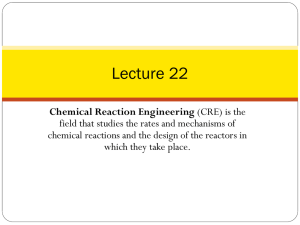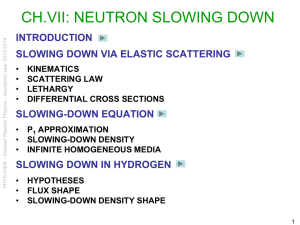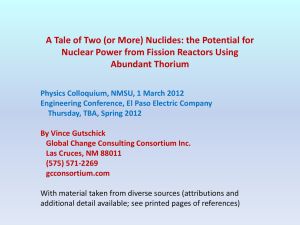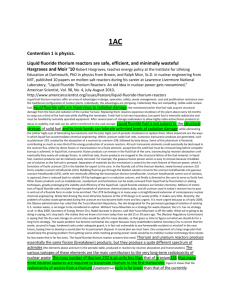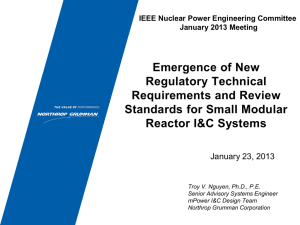India`s nuclear energy future
advertisement
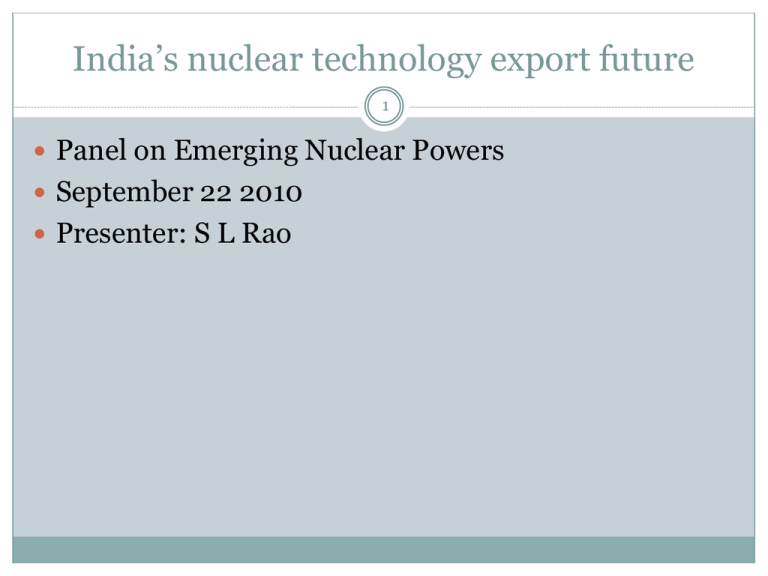
India’s nuclear technology export future 1 Panel on Emerging Nuclear Powers September 22 2010 Presenter: S L Rao A Nuclear India 2 India started work on the peaceful use of atomic energy in the early 1950’s Large body of trained scientists and engineers Nuclear power program proceeded with little fuel or technological assistance Power reactors to mid 1990s had lowest capacity utilization factors, due technical difficulties because of isolation, but rose from 60% in 1995 to 85% in 2001-02. In 2008-10 load factors dropped due to shortage of uranium fuel. Now improved due resumed uranium supplies Towards Self-sufficiency Uranium exploration and mining Fuel fabrication 3 Heavy water production Reactor design and construction Reprocessing and waste management Pressurized Heavy Water Reactor (PHWR) finalized in 1964; this prototype - Rajasthan-1, with Canada's Douglas Point reactor as reference unit in 1964, built as collaborative venture between Atomic Energy of Canada Ltd (AECL) and NPCIL. Started up in 1972 and duplicated Subsequent indigenous PHWR development has been based on these units. By 2020 nuclear generation capacity targeted at 21,180 MW Small fast breeder reactor of 500 MWe prototype under construction at Kalpakkam; and further oxide-fuel fast reactors Is building a much larger one. Also developing technology to utilize the abundant thorium deposits as a nuclear fuel Exploded thermonuclear device in 1998 Nuclear Strategy 4 Possible development of nuclear installed 5 capacity Gwe=Giga Watts of Electricity; LWRE=light water reactor; FBR-fast breeder reactor Assumptions: FBR technology is successful expect 2011 8 GW of LWR acquired through imports by 2017. Developed Advanced Heavy Water Reactor using Thorium by 2020. Economics of PFBR 6 Capacity – 500 MWe Capital cost – Rs. 3492 Crores Cost of energy – Rs. 3.25 per kWh Fuel – MOX (PuO2 and UO2). 29% PuO2 Burn-up rate – 100 GWd/t Expected operating life – 60 years Expected cost reduction due to technology learning – 25%. Gestation period – 5 years. Next generation reactors will be of capacity 1000 MW. Five designs being considered. Prototype fast breeder reactor Goals of Third Stage 7 Utilization of the Thorium fuel on a commercial scale. Large scale deployment of nuclear power. Achieving excellent economics comparable to other alternatives. Providing non-electrical application, in particular desalination and high-temperature processing applications including non-fossil fluid fuels. Potential from Nuclear energy 8 Heavy Engineering capability-1 9 Larsen & Toubro (L&T) in July 2008 preparing for international markets for supply of heavy engineering components for nuclear reactors. L & T J.V. with NPCIL building plant for domestic and export nuclear forgings to produce 600-tonne ingots in steel melt shop; a very large forging press to supply finished forgings for nuclear reactors, pressurizes and steam generators; also heavy forgings for critical equipment in the hydrocarbon sector and for thermal power plants. In 2009, L&T signed four agreements with foreign nuclear power reactor vendors. 1. With Westinghouse for component modules for Westinghouse's AP1000 reactor. 2. With Atomic Energy of Canada Ltd (AECL) "to develop a competitive cost/scope model for the ACR-1000." 3. With Atomstroyexport for components for the next four VVER reactors at Kudankulam, extending beyond that to other Russian VVER plants in India and internationally. 4. With GE Hitachi to produce major components for ABWRs. (advanced heavy water reactor) Heavy Engineering Capability-2 Two companies to utilize indigenous Indian capabilities for complete10construction of nuclear power plants including the supply of reactor equipment and systems, valves, electrical and instrumentation products for ABWR plants to be built in India. L&T "will collaborate with GEH to engineer, manufacture, construct and provide certain construction management services" for the ABWR project. Early in 2010 L&T signed an agreement with Rolls Royce to produce technology and components for light water reactors in India and internationally Two other large engineering companies entering nyclear-Bharat Forge and Bharat Heavy Electricals Long-term goal to develop an advanced heavywater thorium cycle. First stage of this employs the PHWRs (pressurized heavy water reactors) fuelled by natural uranium, and light water reactors, to produce plutonium. Commitments and Policies 11 India never a nuclear weapons proliferator, unlike China, North Korea and Pakistan Has never used nuclear weapons as direct or implied threat India declared nuclear no-first-use policy and is developing a nuclear doctrine based on "credible minimum deterrence Considers NPT and CTBT are discriminatory To combat climate change India requires substantial nuclear energy capacity Must rise from 20000 MW by 2020 to 63,000 MWe by 2032 and aims to supply 25% of electricity from nuclear power by 2050 Export Opportunities in coming years for India 12 TOP PRIORITY IS TO RAPIDLY EXPAND ELECTRICITY CAPACITY Equipment Different stages of nuclear energy EPC contracts Operations Technology THE END



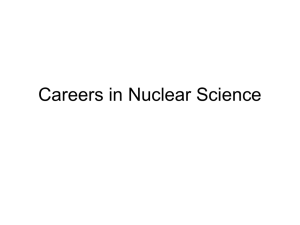
![The Politics of Protest [week 3]](http://s2.studylib.net/store/data/005229111_1-9491ac8e8d24cc184a2c9020ba192c97-300x300.png)


